|

May
02, 2023
By
Bill
Colley
Why You'll Never See New Windfarms in Idaho
I’m telling you, the Lava Ridge
Wind Project will not happen. The same with Salmon Falls and Taurus,
two additional projects proposed for southern Idaho. The Bureau of
Land Management may approve Lava Ridge, but then the lawsuits will
follow. There are going to be prolonged environmental challenges and a
shortage of parts. A writer at CNET says simple deep-state bureaucracy
will get in the way.
By the time the dust clears, we’ll be well past 2030. A Republican
President will likely come along and scrap these projects, just as
Biden shelved the Keystone XL Pipeline. Past 2030, we’ll also have
learned that small modular nuclear reactors are the bridge to our
energy future.
U.S. Senator Jim Risch mentioned three test units will soon be going
online. He shared the details with the Interior Secretary during a
hearing on Capitol Hill. You can watch the exchange by clicking here.
Idaho is at the center of the modular revolution. The state is home to
the planet's premier nuclear research facility in Idaho National
Laboratory. This also means jobs!
I fully expect that if the BLM approves the wind farms, there will be
civil disobedience. Demonstrators will make headlines, but in the long
run, the projects will fade away on their own. In the meantime, county
governments are likely to pass ordinances restricting weight loads on
roads. Limits on noise will follow. You see, for any construction
crew, you’ll find constant hurdles. The time will come when the
developers will do a cost-benefit analysis and then checkout.
RANKED: Here are the most popular
national parks
To determine the most popular
national parks in the United States, Stacker compiled data from the
National Park Service on the number of recreational visits each site
had in 2020. Keep reading to discover the 50 most popular national
parks in the United States, in reverse order from #50 to #1. And be
sure to check with individuals parks before you visit to find out
about ongoing, pandemic-related safety precautions at
www.nps.gov/coronavirus.

#50. Great Basin National Park
- Recreational visits in 2020: 120,248
- Percent of total national park visits: .18%
Located in Nevada, Great Basin National Park has both warm desert
valleys and mountains that reach up to 13,000 feet. Visitors can see
fossils, caves, rock formations, and even a glacier. Thanks to its
wide elevation range, the park is home to a large spread of
biodiversity, including 73 species of mammals, 238 species of birds,
and more than 800 plant species.

#49. Guadalupe Mountains National Park
- Recreational visits in 2020: 151,256
- Percent of total national park visits: .22%
Guadalupe Mountains National Park in Texas has the four highest peaks
in the state and protects the world's most extensive Permian fossil
reef, making the park a geologist's paradise. The Guadalupes were once
home to the Mescalero Apache Native Americans, and pictographs from
early settlers can still be seen in the park's caves. At one point,
the Guadalupe Mountains were all underwater in the Delaware Sea.

#48. Pinnacles National Park
- Recreational visits in 2020: 165,740
- Percent of total national park visits: .24%
Pinnacles National Park in California was born after several volcanoes
erupted, forming the unique landscape of the park, which is packed
with canyons, rock spires, and woodlands. When the park was
established in 1908, it was only 2,060 acres, but has now grown to
26,000. Because of hot summer temperatures, Pinnacles is most popular
in the winter months.

#47. Channel Islands National Park
- Recreational visits in 2020: 167,290
- Percent of total national park visits: .25%
The gorgeous Channel Islands National Park in California is comprised
of five islands, each with a unique history. The northern islands were
once home to the native Chumash people and eventually European
explorers who harvested fish from the channel waters. The unique
environment surrounding the islands contributes to a huge amount of
biological diversity that represents 1,000 miles of the West Coast of
North America.

#46. Virgin Islands National Park
- Recreational visits in 2020: 167,540
- Percent of total national park visits: .25%
Virgin Islands National Park comprises two-thirds of the island of St.
John and almost all of nearby Hassel Island. First inhabited between
2,500 and 3,000 years ago, St. John was home to the Taino people,
colonial Europeans, and enslaved Africans. Today the park offers
stunning beaches, hikes to what were once plantations when sugar
monopolized the economy, a bird-viewing deck overlooking a salt pond,
and petroglyphs carved by the pre-Columbus Taino.

#45. Carlsbad Caverns National Park
- Recreational visits in 2020: 183,835
- Percent of total national park visits: .27%
Located in southern New Mexico, Carlsbad Caverns National Park's 119
caves were born when sulfuric acid dissolved limestone millions of
years ago, leaving behind a treasure trove of caverns. The Big Room in
Carlsbad Cavern is the largest single cave chamber by volume in North
America and takes an hour and a half to cross, according to the
National Park Service. Birders from around the globe flock to
Rattlesnake Spring to see some of the 300 documented bird species.

#44. Voyageurs National Park
- Recreational visits in 2020: 263,091
- Percent of total national park visits: .39%
Voyageurs National Park in Minnesota is 40% water, so many visitors
navigate the park by boat. The park is known for its spectacular view
of the stars, and the aurora borealis is sometimes visible. Moose,
wolves, and black bears are just a few of the animals that call the
park home year-round.

#43. Redwood National Park
- Recreational visits in 2020: 265,177
- Percent of total national park visits: .39%
While Redwood National Park in California is famous for the tallest
trees on the planet, the park also protects coastline and prairies.
Visitors can watch the gray whale migration at the Klamath River
Overlook and walk on gray sands at Gold Bluffs Beach with remains from
the state's mining era. Animals including Roosevelt elk, California
sea lions, eagles, and banana slugs call the park home.

#42. Mesa Verde National Park
- Recreational visits in 2020: 287,477
- Percent of total national park visits: .42%
Mesa Verde National Park in Colorado protects nearly 5,000
archaeological sites that have preserved the history of the ancestral
Pueblo people. They inhabited the land for almost 700 years, building
dwellings into the cliffs and establishing communities before moving
away. Visitors can both see and explore several of the cliff dwellings
through tours and hiking trails.

#41. Mammoth Cave National Park
- Recreational visits in 2020: 290,392
- Percent of total national park visits: .43%
Kentucky's Mammoth Cave National Park is known for housing the world's
longest cave system, which stretches 400 miles. Though famous for its
caves, the park also has more than 70 threatened or endangered species
that include birds, crustaceans, and fish. It is believed that the
first human entered Mammoth Cave 4,000 years ago.

#40. Haleakala National Park
- Recreational visits in 2020: 319,147
- Percent of total national park visits: .47%
Haleakala National Park in Hawaii is home to a volcano with a
10,000-foot summit, and is the highest point on Maui. Native Hawaiians
have lived on this land for more than 1,000 years, making this an
important cultural site. According to the National Park Service, many
of the legends surrounding Haleakala focus on the demigod Maui, and
natives consider the summit to be the place where Maui snared the sun
in order to slow its passage through the sky.

#39. Black Canyon of the Gunnison National
Park
- Recreational visits in 2020: 341,620
- Percent of total national park visits: .50%
The canyons and rock spires at Black Canyon of the Gunnison National
Park in western Colorado can reach a surface temperature of up to 120
degrees. Many of the desert creatures that call the park home use
ephemeral pools in rocks as their main water source. Some of the
canyon's formations are up to 500 million years old, and contain
sedimentary, metamorphic, and igneous stones.

#38. Petrified Forest National Park
- Recreational visits in 2020: 384,483
- Percent of total national park visits: .57%
Petrified Forest National Park in Arizona is home to the gorgeous
Painted Desert and Crystal Forest, where petrified logs shine with
quartz crystals. The site in the park known as Newspaper Rock contains
more than 650 petroglyphs between 650 and 2,000 years old. The
landscape of the park features mesas and buttes created by erosion.

#37. Big Bend National Park
- Recreational visits in 2020: 393,907
- Percent of total national park visits: .58%
Big Bend National Park in Texas offers spectacular views of the
Chihuahuan Desert landscape as well as the Rio Grande. Visitors to the
park can even enter Mexico through the park's Boquillas Crossing Port
of Entry. Big Bend has more species of birds, bats, and cacti than any
other national park in the United States.

#36. Biscayne National Park
- Recreational visits in 2020: 402,770
- Percent of total national park visits: .59%
Biscayne National Park located just next to Miami is an ocean-lover's
paradise, with crystal clear waters, colorful coral reefs, and more
than 500 species of reef fish. Visitors also have the chance to spot
manatees, sea turtles, and pelicans. Though the park comprises several
islands, 95% of the park is actually water.

#35. Kings Canyon National Park
- Recreational visits in 2020: 415,077
- Percent of total national park visits: .61%
Kings Canyon National Park in California boasts giant sequoia trees, a
tall granite dome with sweeping views, and a marble cavern known as
Crystal Cave. Because the park has an elevation gradient of more than
13,000 feet, it plays host to around 1,300 plant species and 300
animal species.

#34. White Sands National Park
- Recreational visits in 2020: 415,383
- Percent of total national park visits: .61%
The park is aptly named, featuring wavy white sands over nearly 300
square miles in New Mexico's Tularosa Basin. This is the world's
largest gypsum dune field, and the park
preserves a major part of it. Visits can include the park's historic
district, listed on the National Register of Historic Places, the
Lucero Ranch on the shore of Lake Lucero and the White Sands Missile
Range Museum and Trinity Site, where in 1945 the first atomic bomb was
tested.

#33. Wind Cave National Park
- Recreational visits in 2020: 448,405
- Percent of total national park visits: .66%
Wind Cave National Park in South Dakota is famous for its rare boxwork
cave formations that consist of paper-thin intersecting lines of
calcite. Other unique formations include popcorn, frostwork, dogtooth
spar crystals, and flowstone. Exploration of the cave began in 1881
when brothers Jesse and Tom Bingham discovered a small hole in the
ground, which was the cave's sole natural opening.

#32. Great Sand Dunes National Park & Preserve
- Recreational visits in 2020: 461,532
- Percent of total national park visits: .68%
Great Sand Dunes National Park in Colorado is famous for the tallest
sand dunes in North America, that stretch 30 miles across. The park is
also home to five alpine lakes, forests, meadows, and grasslands.
Popular activities in the park include sand sledding and sand boarding
as well as horseback riding and swimming in the Medano Creek.

#31. Gateway Arch National Park
- Recreational visits in 2020: 486,021
- Percent of total national park visits: .72%
Unlike many other national parks, the Gateway Arch National Park in
Missouri is located in a major city and isn't focused on preserving
wildlife. The park contains the 630-foot Gateway Arch monument and St.
Louis' Old Courthouse. The courthouse was where the first two trials
of the landmark Dred Scott case were held in 1847 and 1850. The arch
is the nation's tallest monument.

#30. Canyonlands National Park
- Recreational visits in 2020: 493,914
- Percent of total national park visits: .73%
Utah's Canyonlands National Park features a unique landscape of
canyons, mesas, and buttes formed by the Colorado River and its
tributaries. Even though the park is considered a desert, its high
elevation gives it a varying climate; temperatures here can fluctuate
as much as 50 degrees in a day. This, combined with the low annual
rainfall, make the park a perfect home for drought-resistant plants
such as cacti, yuccas, and mosses.

#29. Lassen Volcanic National Park
- Recreational visits in 2020: 542,274
- Percent of total national park visits: .80%
Each rock at Lassen Volcanic National Park in California is a result
of a volcanic eruption, given that the park has been volcanically
active for 3 million years. The world's four volcanic types--shield,
composite, cinder cone, and plug dome--are all present at the park and
located in close proximity to each other. Park visitors can also check
out the park's several fumaroles, mud pots, and boiling pools.

#28. Theodore Roosevelt National Park
- Recreational visits in 2020: 551,303
- Percent of total national park visits: .81%
Located in North Dakota, Theodore Roosevelt National Park's dominating
feature is the badlands, which are colorful, rolling hills consisting
of rock that are millions of years old. Erosion and other natural
processes like lightning strikes and prairie fires continue to shape
the badlands today. The park is of course named for the U.S. president
who first came to the Dakotas in 1883 to hunt bison.

#27. Hawaii Volcanoes National Park
- Recreational visits in 2020: 589,775
- Percent of total national park visits: .87%
Hawaii Volcanoes National Park is home to the Kilauea Volcano and
periodically erupting Mauna Loa. Mauna Loa has the most mass of any
mountain on Earth, occupying a volume of about 20,000 cubic miles. The
park was created to preserve the natural setting of both Kilauea and
Mauna Loa, as well as the Big Island's native plants and animals.

#26. Crater Lake National Park
- Recreational visits in 2020: 670,500
- Percent of total national park visits: .99%
Crater Lake National Park in Oregon was formed when a volcanic
eruption at Mount Mazama triggered the collapse of a tall peak,
forming the deepest lake in the United States. The crater, also known
as a caldera, is 5 to 6 miles long and 3,900 feet deep, making it the
seventh-deepest lake in the world, the National Park Service reports.
Because the lake doesn't have any inlets or outlets, the water comes
entirely from precipitation, giving it a clear blue hue.

#25. Everglades National Park
- Recreational visits in 2020: 702,319
- Percent of total national park visits: 1.03%
Everglades National Park is of such biological importance that it is
also a World Heritage Site, International Biosphere Reserve, and
Wetland of International Importance. The park protects rare and
endangered species, including the manatee, American crocodile, and
Florida panther. Bird watching is a popular activity in the park, with
blue herons, bald eagles, and red-shouldered hawks to spot.

#24. Saguaro National Park
- Recreational visits in 2020: 762,226
- Percent of total national park visits: 1.12%
As its name suggests, Saguaro National Park in Arizona protects giant
saguaro cacti, a symbol of the American West. The average lifespan of
one of these cacti is 125 years old, and it produces sweet fruits. The
park is also home to a variety of animals, many of which can only be
found in the southern part of the state, including kangaroo rats,
roadrunners, and horned lizards.

#23. Sequoia National Park
- Recreational visits in 2020: 796,086
- Percent of total national park visits: 1.17%
Sequoia National Park is adjacent to Kings Canyon National Park in
California and was the first park established to protect a living
organism: its native sequoia trees. Since World War II, Sequoia and
Kings Canyon have been administered jointly. In 2014, Sierra Nevada
bighorn sheep were reintroduced to the park for the first time in 100
years as part of a recovery effort for this endangered species.

#22. Death Valley National Park
- Recreational visits in 2020: 820,023
- Percent of total national park visits: 1.21%
Death Valley National Park in California and Nevada is home to the
driest, lowest, and hottest spot in North America. The park was once
home to a variety of different people, including the Timbisha Shoshone
Native Americans, Chinese workers, the Basque people, and Japanese
American internees, according to the National Park Service. Today,
visitors can experience the park's sand dunes, salt flats, and a dry
lakebed known as the Racetrack Playa.

#21. Badlands National Park
- Recreational visits in 2020: 916,932
- Percent of total national park visits: 1.35%
The striking landscape of Badlands National Park in South Dakota
contains one of the world's richest fossil beds. At one point, it was
home to the rhino and saber-toothed cat. The Badlands were formed
nearly 70 million years ago by erosion and deposition of sediment when
an ancient sea was located where today's Great Plains are. Erosion
will eventually entirely erase the Badlands.

#20. Capitol Reef National Park
- Recreational visits in 2020: 981,038
- Percent of total national park visits: 1.44%
Capitol Reef National Park in Utah is famous for the Waterpocket Fold,
a geologic monocline extending almost 100 miles and considered a
"wrinkle on the earth." The fold was formed 50 to 70 million years ago
as a warp in the Earth's crust, and erosion has exposed the fold at
the surface. The park has some of the darkest night skies in the
United States, so much so that it has been designated an International
Dark Sky Park.

#19. New River Gorge National Park & Preserve
- Recreational visits in 2020: 1,054,374
- Percent of total national park visits: 1.55%
New River Gorge National Park & Preserve consists of 70,000 acres
along the New River, a whitewater river in southern West Virginia that
despite its name is one of the oldest on the continent. From the
Canyon Rim Visitor Center, the sides of the valley fall almost 900
feet into the deepest and longest river gorge in the Appalachian
Mountains. Visitors can go whitewater rafting or canoeing, rock
climbing, bird watching, camping, hiking, or biking along an old
railroad grade.

#18. Mount Rainier National Park
- Recreational visits in 2020: 1,160,754
- Percent of total national park visits: 1.71%
Located in Washington, Mount Rainier National Park is famous for
housing the most glaciated peak in the contiguous United States. Mount
Rainier is the highest volcano in the Cascade Range, and experiences
about 20 small earthquakes a year. Some of the animals that visitors
regularly spot at the park include mountain goats, ravens, elk, and
black bears.

#17. Arches National Park
- Recreational visits in 2020: 1,238,083
- Percent of total national park visits: 1.82%
Arches National Park in Utah lives up to its name and has more than
2,000 natural stone arches, the densest concentration of natural stone
arches in the world. These sandstone geological formations are the
result of erosion and a thick layer of salt beneath the rock surface.
The arches are impermanent, however; the 71-foot Wall Arch collapsed
in 2008.

#16. Hot Springs National Park
- Recreational visits in 2020: 1,348,215
- Percent of total national park visits: 1.98%
Known as "The American Spa," Hot Springs National Park in Arkansas has
thermal waters with soothing properties. Typically, hot springs pop up
in areas with volcanic activity and are rare in the central part of
the continent. These hot springs are situated along a fault on the
western side of Hot Springs Mountain.

#15. Bryce Canyon National Park
- Recreational visits in 2020: 1,464,655
- Percent of total national park visits: 2.16%
Bryce Canyon National Park in Utah has the world's largest collection
of hoodoos, pillars of rock left standing after erosion. Bryce Canyon
contains a series of natural amphitheaters and bowls, the most famous
being Bryce Amphitheater, which is full of the park's iconic hoodoos.
The park is one of three national parks to house the Grand Staircase
geological formation, which is a giant sequence of sedimentary rock
layers.

#14. Shenandoah National Park
- Recreational visits in 2020: 1,666,265
- Percent of total national park visits: 2.45%
Just 75 miles from the nation's capital, Shenandoah National Park in
Virginia showcases the Blue Ridge Mountains and is home to 90
perennial streams, many of which turn into cascading waterfalls. While
many native species have been lost over time, today the park has more
than 200 bird species, 50 mammal species, and more than 35 fish
species, the National Park Service reports. The park is popular with
hikers, with 500 miles of trails, including 101 miles of the famed
Appalachian Trail.

#13. Glacier National Park
- Recreational visits in 2020: 1,698,864
- Percent of total national park visits: 2.50%
Glacier National Park in Montana is responsible for housing streams
that flow into the Pacific Ocean, the Gulf of Mexico, and Hudson's
Bay. Because of this, it has become home to a variety of plants and
animals, so much so that it has been designated an International
Biosphere Reserve and World Heritage Site. The park was carved from
glaciers dating back 10,000 years, exposing bedrock that has helped
scientists understand the Earth's movement.
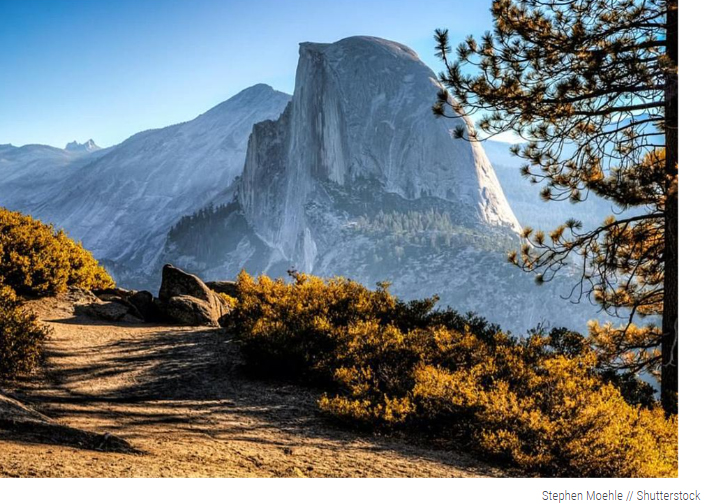
#12. Yosemite National Park
- Recreational visits in 2020: 2,268,313
- Percent of total national park visits: 3.34%
Yosemite National Park in California is home to the 2,425-foot
Yosemite Falls, the largest waterfall in North America. With 800 miles
of hiking, there's plenty to explore, including enormous granite
mountains, such at Mt. Lyell, the park's tallest point. Visitors can
enjoy the Mariposa Grove of giant sequoia trees, the peaceful Hetch
Hetchy Valley, and rock formations carved by ancient glaciers.

#11. Indiana Dunes National Park
- Recreational visits in 2020: 2,293,106
- Percent of total national park visits: 3.38%
With 15 miles of Lake Michigan shoreline for swimming, surfing, and
paddling, beachgoers may forget they're in Indiana. For those
interested in hiking and biking, there are more than 50 miles of
trails of varying difficulty through dunes, wetlands, forests, and
prairies, with a handicap accessible trail at the Portage Lakefront
and Riverwalk. Note that the only area with lifeguards present is West
Beach--also the only site with a fee--during the summer months.
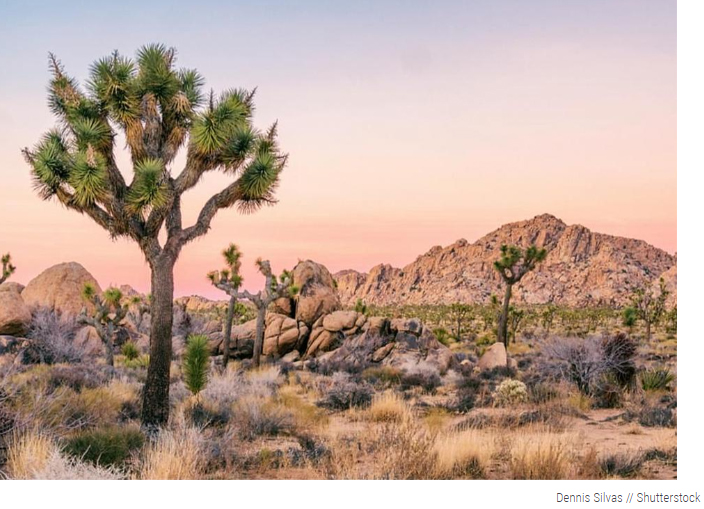
#10. Joshua Tree National Park
- Recreational visits in 2020: 2,399,542
- Percent of total national park visits: 3.53%
Joshua Tree National Park in California was named after its
picturesque, spiky Joshua trees. Mormon immigrants named the trees
after the biblical Joshua after noticing that the limbs looked as if
they were outstretched in prayer. Many of the park's animals,
including the Scott's orioles, wood rats, and desert night lizards,
depend on the tree for food and shelter. Keys View in the park offers
an incredible view of the Coachella Valley, the San Andreas Fault, and
San Jacinto.

#9. Olympic National Park
- Recreational visits in 2020: 2,499,177
- Percent of total national park visits: 3.68%
Olympic National Park in Washington has temperate rainforests,
glacier-topped mountains, and more than 70 miles of coastline. The
park was established in 1938 to protect some of the state's quickly
vanishing forests, and now protects one of the largest remaining
blocks of temperate rainforest in the lower 48 states. Visitors to the
park can see Mount Olympus, which stands 7,980 feet high, on a clear
day.
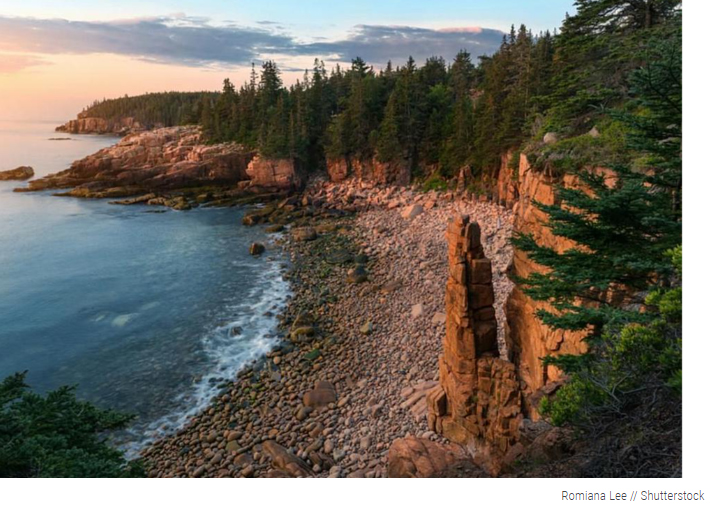
#8. Acadia National Park
- Recreational visits in 2020: 2,669,034
- Percent of total national park visits: 3.93%
Acadia National Park in Maine protects the highest rocky headlands
along the Atlantic coastline in the United States, including Cadillac
Mountain, the tallest mountain on the eastern coast of the country.
Granite ridges in the park were formed by glaciers that measured up to
9,000 feet thick, and evidence of their presence is visible throughout
the park.
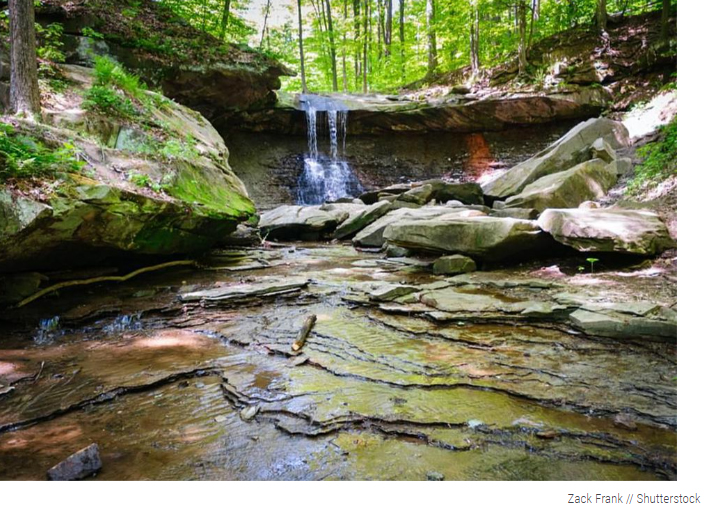
#7. Cuyahoga Valley National Park
- Recreational visits in 2020: 2,755,628
- Percent of total national park visits: 4.06%
Near Cleveland and Akron, Ohio's Cuyahoga Valley National Park
preserves the beauty of the Cuyahoga River and showcases the historic
route of the Ohio and Erie Canal. Popular attractions at the park
include the 65-foot Brandywine Falls waterfall, Beaver Marsh, and the
National Park Scenic train. The park is home to an astounding 900
plant species, 194 bird species, and almost two dozen reptile species.

#6. Grand Canyon National Park
- Recreational visits in 2020: 2,897,098
- Percent of total national park visits: 4.26%
Grand Canyon National Park in Arizona is synonymous with its
world-famous canyon that is 18 miles wide and 1 mile deep. The park
encompasses more than 1 million acres and consists of raised plateaus
and structural basins. The Grand Canyon is considered one of the best
examples of arid land erosion in the world. It has a rich and diverse
fossil record, and the land offers a detailed record of three out of
the four geological eras.

#5. Grand Teton National Park
- Recreational visits in 2020: 3,289,638
- Percent of total national park visits: 4.84%
Grand Teton National Park in Wyoming has a rich history beginning
11,000 years ago when nomadic paleo-Indians harvested berries, crafted
stone tools, and fished in lakes, leaving behind evidence for
historians. The weather in the park can get unbearably cold: The
lowest temperature ever recorded was -63 degrees Fahrenheit. The
center line of the 2017 solar eclipse was visible from the park,
sending it into totality against the backdrop of its glacier-carved
landscape.
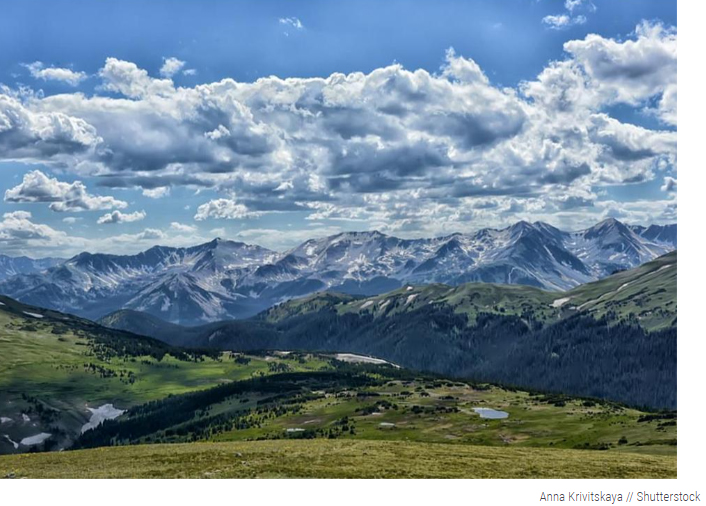
#4. Rocky Mountain National Park
- Recreational visits in 2020: 3,305,199
- Percent of total national park visits: 4.87%
Rocky Mountain National Park in Colorado is home to some of the
highest mountains in the continental United States. Sixty mountain
peaks measure in at more than 12,000 feet high, making the park a
popular destination for hikers. Visitors can fish at more than 50
lakes and streams.

#3. Zion National Park
- Recreational visits in 2020: 3,591,254
- Percent of total national park visits: 5.29%
Zion National Park was Utah's first national park and is famous for
its landscape of giant colorful sandstone cliffs. Around 12,000 years
ago, the first people to visit this land tracked mammoths, giant
sloths, and camels until those animals died about 8,000 years ago, the
National Park Service says. Because of the range in elevation in the
park, it has more than 1,000 diverse plant species.

#2. Yellowstone National Park
- Recreational visits in 2020: 3,806,306
- Percent of total national park visits: 5.60%
Yellowstone National Park spans three states: Idaho, Montana, and
Wyoming. As the world's first national park, Yellowstone has plenty to
offer, including the famed Old Faithful geyser, Mt. Washburn, and the
Mammoth Hot Springs. The park is one of the largest nearly intact
temperate-zone ecosystems on Earth, making it home to the largest
concentration of mammals in the lower 48 states.
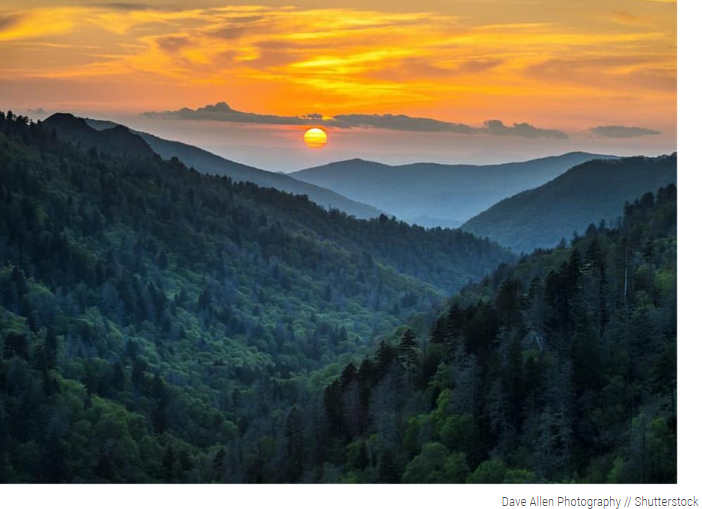
#1. Great Smoky Mountains National Park
- Recreational visits in 2020: 12,095,720
- Percent of total national park visits: 17.81%
Great Smoky Mountains National Park on the border between North
Carolina and Tennessee is the most biodiverse park in the National
Park system, with more than 19,000 documented species. The Smokies are
among the oldest mountain ranges in the world. On average, more than
85 inches of rain falls in the park each year, fueling 2,100 miles of
streams and rivers that flow through the park.
Green Play Ammonia™, Yielder® NFuel Energy.
Spokane, Washington. 99212
www.exactrix.com
509 995 1879 cell, Pacific.
Nathan1@greenplayammonia.com
exactrix@exactrix.com
|